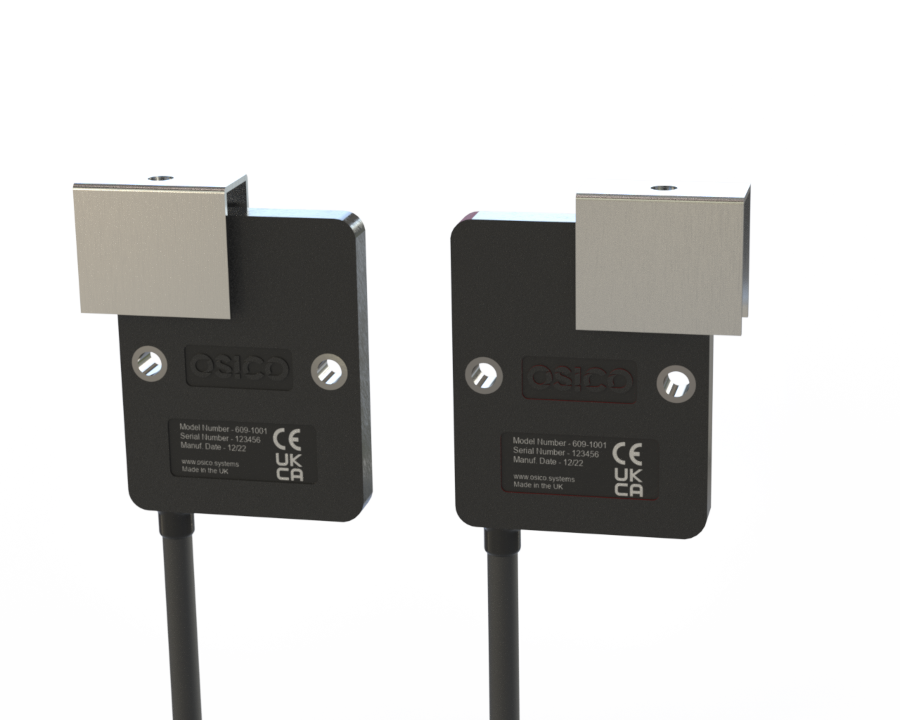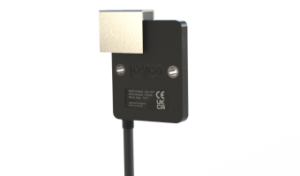ROBUST
VERSATILE
ADAPTABLE
Dependable sensors for industrial applications

609 - 25mm stroke linear sensor
HOW DO inductive SENSORS WORK?
Unveiling Precision: The Operation and Benefits of Inductive Position Sensor Technology
Inductive position sensors are advanced devices that play a pivotal role in numerous industrial and automotive applications, offering unparalleled reliability and high accuracy. At Osico, we’re committed to unraveling the intricacies of this innovative technology and showcasing its myriad benefits.
Principle of Operation
Inductive position sensors operate based on the principle of electromagnetic induction. These sensors consist of a coil or coils wound around a core material, typically made of ferromagnetic material such as iron or ferrite. When an object, often referred to as a target or activator, moves within the sensor’s detection range, it induces a change in the magnetic field around the coil.
This change in magnetic field induces a voltage or current in the coil, which is then detected and processed by the sensor electronics. By analyzing the amplitude, phase, or frequency of the induced signal, the sensor determines the position of the target relative to the sensor.
Key Components
-
Coil(s): The primary sensing element responsible for detecting changes in the magnetic field induced by the target’s movement.
-
Core Material: The material surrounding the coil(s), which helps concentrate and guide the magnetic field for enhanced sensitivity and accuracy.
-
Sensor Electronics: Circuitry that processes the induced signal and converts it into a usable output, typically in the form of analog voltage, current, or digital signal.
Benefits of Inductive Position Sensors
-
High Accuracy: Inductive sensors offer precise position measurement, with resolutions ranging from micrometers to sub-millimeters, depending on the application requirements.
-
Non-Contact Sensing: Since inductive sensors do not require physical contact between the sensor and the target, they are highly durable and resistant to wear and tear, resulting in long-term reliability and reduced maintenance.
-
Wide Operating Range: Inductive sensors can operate in harsh environments, including those with dust, dirt, moisture, and temperature extremes, without compromising performance.
-
Fast Response Time: Inductive sensors provide real-time position feedback, enabling rapid control and adjustment in dynamic applications such as robotics, automation, and machinery.
-
Cost-Effective: Inductive sensors offer a cost-effective solution for position sensing, with competitive pricing and low total cost of ownership over their lifespan.
Applications
Inductive position sensors find applications in diverse industries, including:
- Automotive: Throttle position sensing, pedal position sensing, gearbox position sensing.
- Industrial Automation: Machine tool positioning, conveyor belt tracking, robotic arm positioning.
- Aerospace: Flight control surface position sensing, landing gear position sensing, engine component positioning.
- Consumer Electronics: Touchscreen calibration, camera lens positioning, gaming controller input.
Conclusion
At Osico, we understand the critical role that inductive position sensors play in modern engineering and technology. With high accuracy, reliability, and versatility, these sensors are essential tools for precise position measurement and control in a wide range of applications. Contact us today to explore our range of inductive position sensors and discover how they can elevate your projects to new levels of performance and efficiency.




Discover our advanced high-resolution liquid level sensors tailored for Fuel, Oil, Coolant, and Water applications
Explore our durable Rotary and Linear Position sensors designed for Industrial & Off-Highway applications.
Experience IoT connectivity: monitor switches, sensors, and transmit data via GSM
Elevate industrial monitoring with our plant & machinery condition-based sensors.



